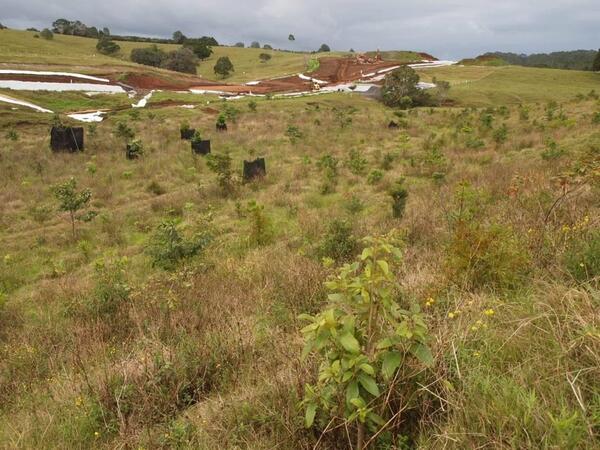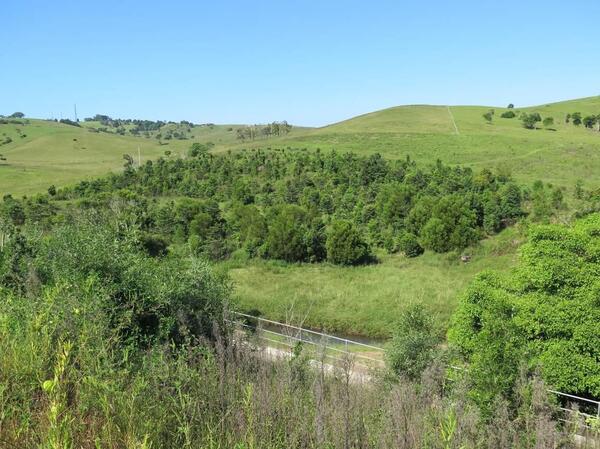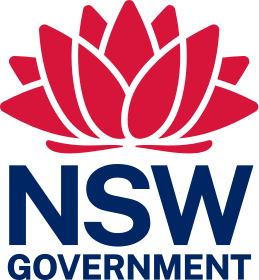
From little things… big things grow – Rainforest restoration success
The Tintenbar to Ewingsdale (Pacific Highway Upgrade in New South Wales presented an opportunity to not only construct crucial infrastructure, but also to restore and protect the threatened subtropical rainforest habitat in the region.
The project involved a comprehensive strategy to mitigate the impacts on threatened flora, which included the translocation of threatened plant species from within the construction footprint, the restoration of subtropical rainforest habitat, and research on threatened plant species ecology.
Image





Image controls:
Approach and implementation
The rainforest restoration component of the project aimed to establish 6 hectares of subtropical rainforest on what was previously cleared agricultural land.
To promote a viable, naturally functioning rainforest community including populations of the translocated threatened species, a comprehensive approach was taken, including:
- Planting approximately 9,000 rainforest plants of over 100 native species, sourced from various nurseries, salvaged seedlings from within the construction footprint, and local seed/cuttings to increase diversity and genetic variability.
- Implementing the restoration in three stages over time to allow for lessons learned and adaptive management.
- Focusing on establishing the translocated threatened and rare species, while also including a mix of pioneer, secondary, and mature-phase rainforest species.
- Utilising standard site preparation and maintenance techniques, such as weed control, mulching, application of slow-release fertiliser, and animal exclusion fencing.
- Conducting annual monitoring and reporting to guide management actions.
Outcomes and impacts
After 13 years, the rainforest restoration has achieved significant success:
- The 3 stages of the restoration now support a diverse, structurally complex subtropical rainforest, with canopy heights ranging from 4-14 meters and 40-90% canopy cover.
- Volunteer/natural recruitment of rainforest species, particularly pioneers, has been observed, demonstrating the establishment of a self-sustaining ecosystem.
- Translocated threatened and rare species have had varied success, with some achieving flowering and fruiting, and natural recruitment observed for a few species.
- The restored rainforest habitat is providing valuable resources and connectivity for local flora and fauna.
- The planting, maintenance and monitoring of the rainforest restoration works has enabled the area to progress to a now self-sustaining rainforest community and demonstrates what can be achieved in restoring previously cleared grazing paddocks.
Lessons learned and future considerations
The project provided several valuable insights for successful rainforest restoration:
- Maintenance for at least 10 years is crucial to ensure the planting becomes well-established, with ongoing weed/grass control, fertilisation, and animal exclusion.
- Utilising a mix of pioneer, secondary, and mature-phase rainforest species. The project showed that good results can also be achieved when the mature-phase species are planted first and supplemented with pioneers and secondary species at a later stage, which can help prevent suppression of the slower-growing species.
- Sourcing diverse plant material from various sources, including salvage and local propagation, enhances the genetic diversity and resilience of the restored ecosystem.
- Ongoing monitoring and adaptive management are essential to address challenges and maintain the long-term success of the restoration.
The site will be protected with a conservation covenant placed on the title of the land to ensure the ongoing natural recruitment and regeneration processes can continue. The successful restoration of this site serves as a model for future rainforest rehabilitation projects in the region.
Image



Image controls:
Related links
For further enquiries, contact our Environment & Sustainability team at environmentandsustainability@transport.nsw.gov.au


